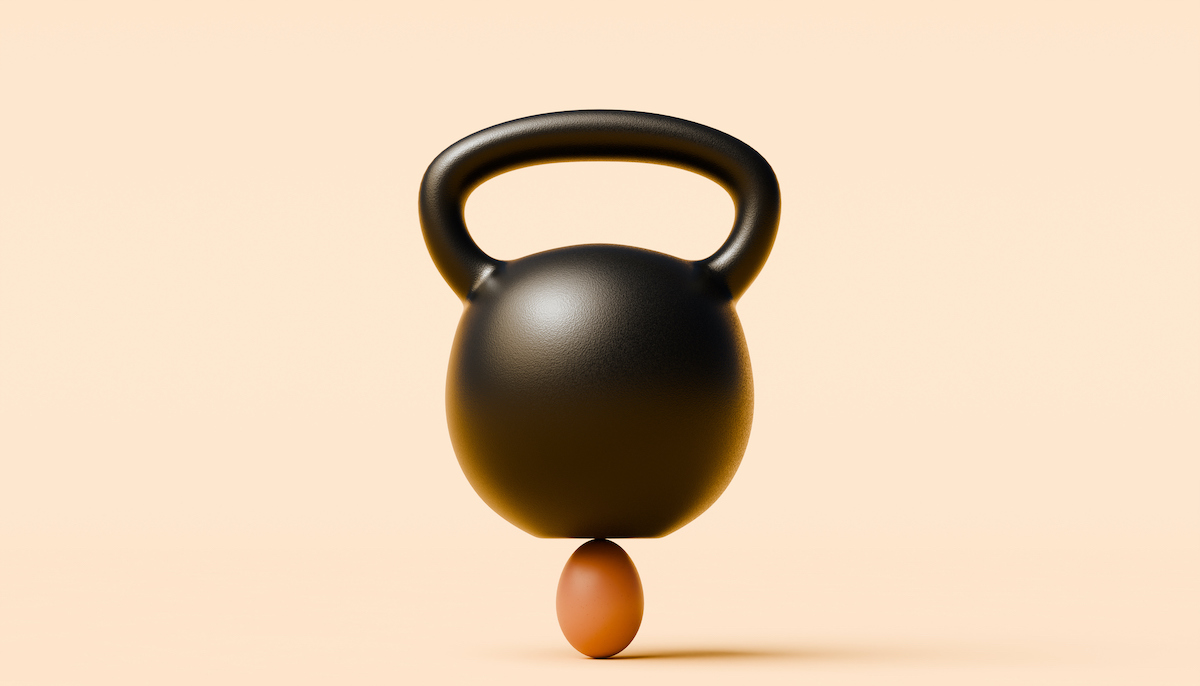Before dawn, actress Sidney Sweeney was in the weight room. By midday, she was kickboxing. At night, she returned to the bench press for a final round. In preparation to play trailblazing boxer Christy Martin, the actress gained thirty pounds and reshaped her entire body. “I was so strong,” she said in a recent profile. “Like crazy strong.”
But before the transformation had a press tour — before the magazine spreads and posed photos — there were murmurs. In December, paparazzi captured her in a bikini, and the online commentariat did what it always does: spun a woman’s changing body into a morality play. Did Sidney Sweeney lose her figure? one headline asked, in a tone both faux-concerned and faintly delighted. As if being visibly muscular, or simply not waifish, was a form of failure. (For what it’s worth — and maybe this is just my opinion, shared with several group chats — she looked great. Like someone who makes money, in part, off her physique, and has possibly just discovered the pleasure of eating more than one egg for breakfast.)
But what those headlines missed — as they so often do — was the more interesting story: Sweeney hadn’t lost her figure. She’d built a new one. And she’s not alone.
Caitlin Clark, fresh off a career that redefined college basketball viewership, has also been drawing attention — not just for her step-back three, but for her shoulders. In the downtime between seasons, she’s added muscle, visibly and intentionally. “I try to put on some weight and I’ve been working hard in the weight room,” she told reporters late last year, like it was the most obvious thing in the world. Which, in the context of elite athletics, it is. But in the context of how we usually talk about women’s bodies? It’s practically subversive.
Fans have noticed, of course. You don’t amass a following like hers without your physique becoming a topic of conversation. Online, commenters have called her “ripped,” “beautiful,” even the “peak female athlete form,” which is both a compliment and a quietly radical redefinition.
And then there’s Ilona Maher — Olympic rugby player, nurse and proud owner of biceps that could crack a crab leg on sight. She’s not just strong; she’s exuberantly strong. Glamorous, even. Earlier this year, she appeared on the cover of Sports Illustrated’s swimsuit issue, declaring: “I hope people see my photos and understand that strength can be so beautiful and so feminine.” It wasn’t a plea. It was a statement of fact.
We need your help to stay independent
And maybe that’s the thing. The women who’ve long been expected to be ornamental — actresses, swimsuit models, even some athletes — are now building bodies that don’t just perform, but project power. These aren’t “revenge bodies” with an emphasis on not getting too bulky. This is strength with mass. With edge.
And, importantly, with an appetite.
All three women have spoken about how their diets, often built around a calorie surplus, have supported their physical goals. Gaining strength, after all, isn’t just about lifting more. It’s about eating more and in a culture that’s long moralized thinness and praised restriction, that’s its own kind of rebellion.
Maher, in particular, is generous about showing exactly what that looks like. On TikTok, she regularly posts “What I Eat in a Day” videos, not to restrict or cleanse, but to fuel. In one recent entry, she starts her morning with protein-packed coffee, grabs a McDonald’s breakfast sandwich and tosses in a salad for lunch. Dinner is a slow, social meal with a friend at a restaurant: French onion soup, a round of vegetables, entrées, bread and dessert. It’s not a cheat day. It’s a Tuesday.
Want more great food writing and recipes? Sign up for Salon’s free food newsletter, The Bite.
These moments aren’t just personal milestones or isolated press clips — they’re cultural signals. Taken together, they sketch the outline of a new archetype: one that embraces strength not as a side effect of discipline, but as a defining trait. One that views nourishment as beautiful, even aspirational.
This isn’t simply a rebuttal to the reemergence of Y2K “thin is back in” aesthetics, though it does stand in striking contrast. It’s something bigger: a quiet uprising against the long-held belief that power must always be sleek, tidy, small. It says: what if we let women take up space — physically, energetically, calorically — and celebrated them not in spite of that, but because of it?
Turns out, strength looks good on everyone.
Read more
about this topic


